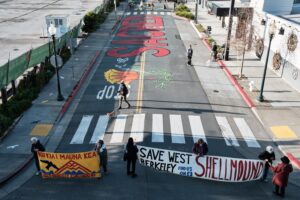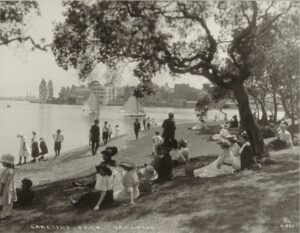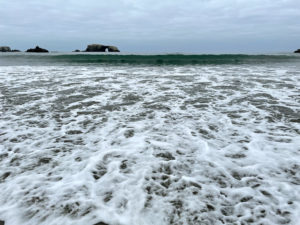Q: What is quicksand? Is there any in the Bay Area? Is it true that an earthquake can turn some land into quicksand? [Chantal, San Francisco]
A: I have had two personal encounters with quicksand and neither happened in the Bay Area. The first was along the Amargosa River near Death Valley; the second was on the bank of the Colorado River in the Grand Canyon. Fortunately, like everyone else who steps in quicksand, I survived! Classic Western movies have portrayed an entirely different scenario: The bad guy is sucked into the muck, leaving only a black hat as witness to his justifiable and righteous death.
So, what is quicksand? “Quick” in this sense does not mean “fast” but rather “alive,” similar to the word “quicksilver,” used for liquid mercury due to its motility. Basically quicksand is made of small particles (technically not sand but finer grains that geologists call silt) that are saturated with water. The friction between the silt particles becomes so reduced that the entire mass is a semi-liquid that can’t support any weight. Most quicksand is only a few feet deep, so drowning in it is not easy. If you happen to find yourself floundering in it, don’t panic (yeah, right). Your body is less dense than the quicksand, so you’ll float, and you can swim to the nearby bank. All your movements should be slow and deliberate. Pretend you’re swimming in a big vat of molasses.
However, there is a closely related phenomenon present in the Bay Area: liquefaction. You can demonstrate this on any beach. Jump up and down on some wet but firm sand. Soon the entire mass will become more and more unstable as your feet sink into it. That’s just what can happen in certain areas during an earthquake. Much of our region’s infrastructure, particularly around the Bay, is built on fill or young sediment very near the water table. During an earthquake the ground shakes and can quickly become saturated with water from below. Just like that beach sand, it becomes unstable–and unable to support overlying structures. Buildings, roads, and bridges collapse just like we saw in the Marina District during the 1989 Loma Prieta earthquake. And this, my friends, is not a movie.
Email your questions to atn@baynature.org.




